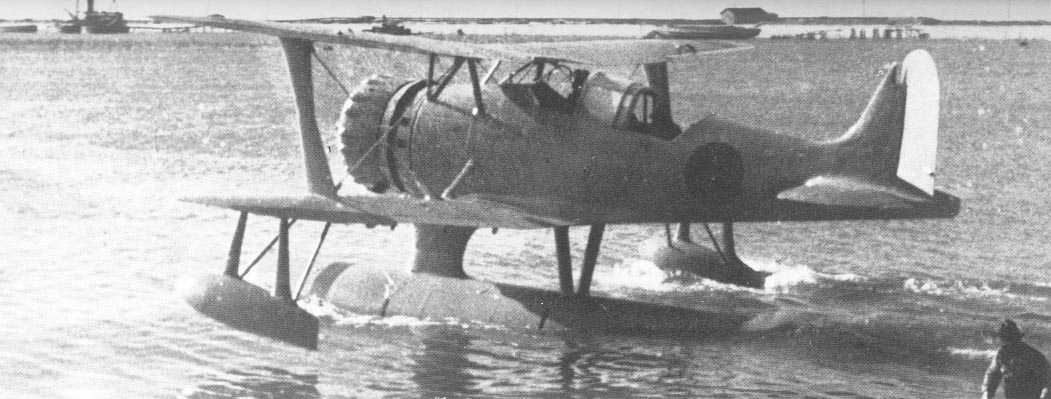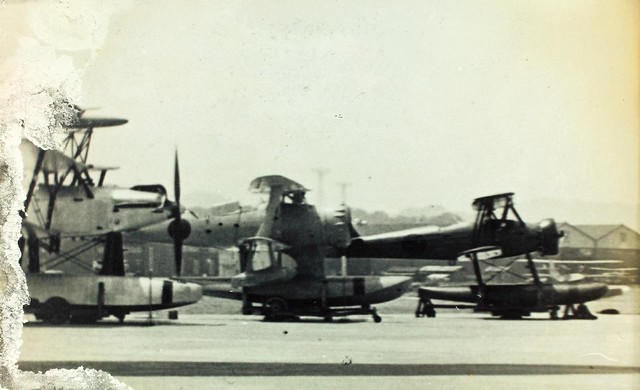- Yes
- No
Mitsubishi F1M Prototype 1 (三菱 F1M 零式観測機)
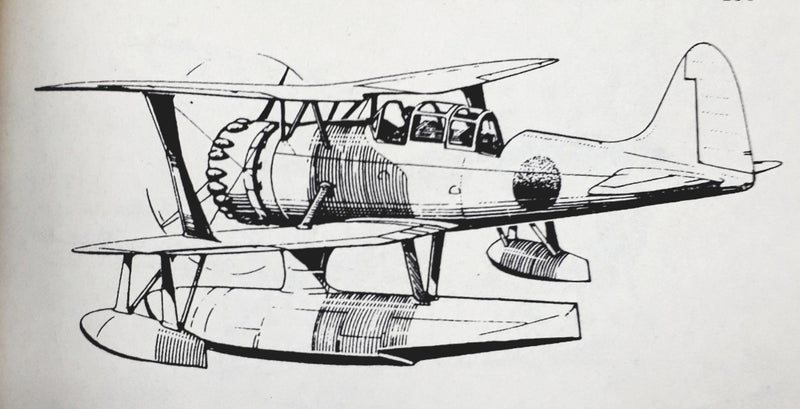
The Mitsubishi F1M prototype 1 is a Japanese prototype flying boat fighter developed in 1936. The first prototype of the Mitsubishi F1M was created to participate in the 10-Shi competition. The next three prototypes had a different engine and a modified design. These planes competed with the Aichi F1A flying boats.
History
In October, the Japanese Navy Command handed over to Aichi, Mitsubishi and Kawanishi the initial assumptions of a new aircraft based on warships. This aircraft was to be two-seater and was to guide the ship’s artillery to targets, and if necessary, conduct air combat with enemy aircraft. These planes were supposed to have a short range, because they were not supposed to conduct reconnaissance like surface reconnaissance planes (E). In May 1935, the exact specifications for the 10-Shi (Ten Test Surface Observation Aircraft) competition were delivered to the Mitsubishi, Aichi plants and Kawanishi. The design requirements were as follows:
- The plane was to be powered by the Nakajima Hikari 1 engine
- The plane was to be able to take off from a catapult
- The plane was to have a large central float under the fuselage and two small auxiliary floats under the wings
- The plane was to have an open cockpit and a semi-open observer cabin
- The plane was to be armed with two fixed machine guns and one mobile machine gun in the observer station
At the Mitsubishi plant, engineer Joji Hattori was responsible for the future F1M aircraft. The airplane received the internal designation Ka-17. Joji decided that the new aircraft should focus not on sheer speed but on climb rate and combat capabilities against enemy fighters. It was decided to make the airplane a biplane, while ensuring it had good aerodynamic qualities. By 1936, only the Mitsubishi and Aichi plants remained in the competition, as the Kawanishi plant withdrew. In June 1936, the first prototype of the Mitsubishi F1M was created, which made its maiden flight on June 22. Later that June, the Mitsubishi F1M and Aichi F1A aircraft arrived at Nagoya port. There it turned out that although the Mitsubishi aircraft met the competition’s requirements for speed and maneuverability, it had very poor stability on water, poor lateral stability, and a tendency to enter spins. The competitive Aichi F1A aircraft also had certain shortcomings, so the Mitsubishi factories proposed to improve the not very successful first prototype F1M. The command of the Japanese Navy agreed to the improvement of the F1M and authorized the creation of three additional prototypes with improvements and the replacement of the Nakajima Hikari 1 engine with the more powerful Mitsubishi Zuisei 13. Work on the improved F1M continued until August 1938, when the modified prototype number 2 was created (that’s a different story). It is unknown what happened to the first prototype, but it probably ended up in scrap after the improved Mitsubishi F1M2 was produced in 1940.
Art about Mitsubishi F1M Prototype 1

Construction description
The first prototype of the Mitsubishi F1M is similar to the Mitsubishi F1M2 aircraft from the game, but there are very important differences between them. Here, I will try to present them.
- Instead of the Mitsubishi Zuisei 13 engine with a starting power of 652 kW (875 HP), there is the Nakajima Hikari 1 engine with a starting power of 603 kW (820 HP).
- The engine cover has been changed.
- The airplane is equipped with a two-blade propeller with a diameter of 2896 mm instead of a three-blade propeller with a diameter of 3000 mm.
- The plane has a different wing profile.
- The cockpit and rear gunner/observer glazing has been changed.
- The steering angle is reduced by 30%.
- The altitude control is lower by 80%.
Technical sketches
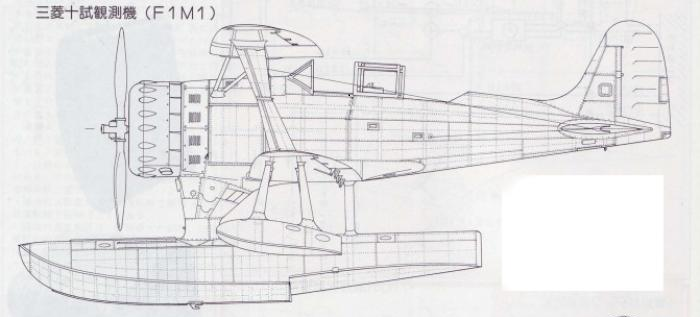
Comparison of the first prototype Mitsubishi F1M with Mitsubishi F1M2
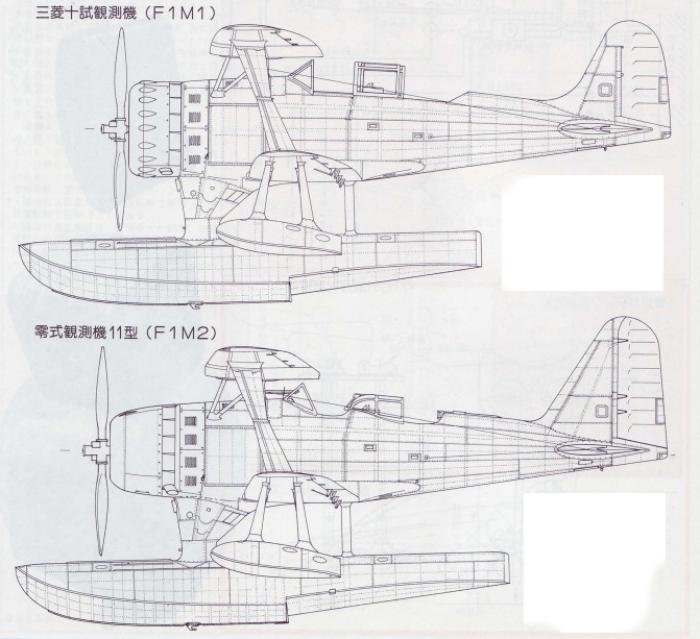
General characteristics
- Crew: 2
- Length: 9,5 m
- Wingspan: 11 m
- Height: 4,165 m
- Wing area: 29,54 m2
- Empty weight: 1,687 kg
- Gross weight: 2,335 kg
- Maximum Take-off Weight: ?
- Powerplant: 1 × Nakajima Hikari 1 air-cooled nine-cylinder radial engine with 820 hp (610 kW)
- Propellers: Two-bladed metal propeller with adjustable angle of attack with a diameter of 2,896 mm
Performance
- Maximum speed: 340 km/h
- Cruise speed: 285 km/h
- Range: 470 km
- Maximum Range: 1070 km
- Service ceiling: 8000 m
- Climb Rate: 8,58 m/s
- Time to altitude: 11,4 min to 5000 m
Armament
- Guns:
- 2 x Type 92 fixed machine guns 7.7mm between engine cylinders
- 1 x Mobile Type 92 7.7mm machine gun in the Observer Station
- Bombs
- 2 x 30 kg bombs
- 2 × 60 kg bombs
Special thanks
Summary
The first prototype of the Mitsubishi F1M is an interesting aircraft for Japan in War Thunder. This aircraft would be a useful low-tier seaplane that could capture naval points, destroy enemy fighters, or bomb ships. This aircraft is also suitable to be a premium or event plane. I encourage you to discuss in the comments and to share your own knowledge on this subject.
Finally, I apologize for the linguistic and logical errors because unfortunately English is not my main language and I had to use google translator.
Internet sources
零式観測機 - Wikipedia
零式水上観測機/三菱Mitsubishi F1M | 大日本帝国軍 主要兵器
海軍 零式観測機(F1M1、M2) | 国産機械バカ(hase)
IJN Specification 10-Shi (F1, Reconnaissance Seaplane, 1934) | Secret Projects Forum
Micubiši F1M1 10-Ši : Micubiši
Mitsubishi F1M Reconnaissance Seaplane
Mitsubishi F1M
Уголок неба ¦ Mitsubishi F1M
Warplanes of Japan: Mitsubishi F1M floatplane
Mitsubishi F1M - Wikipedia
Book sources
- Japońskie Samoloty Marynarki 1912-45 (Japanese naval aircraft 1912-45) page 185-187
Japońskie Samoloty Marynarki 1912-45 | PDF - Imperial Japanese Navy Reconnaissance Seaplane , page 18-20
047 Imperial Japanese Navy Reconnaissance Seaplane | PDF - Japanese Aircraft of the Pacific War page 358-362

Thank you for reading the suggestion, see you in the next one. Good luck pilots

